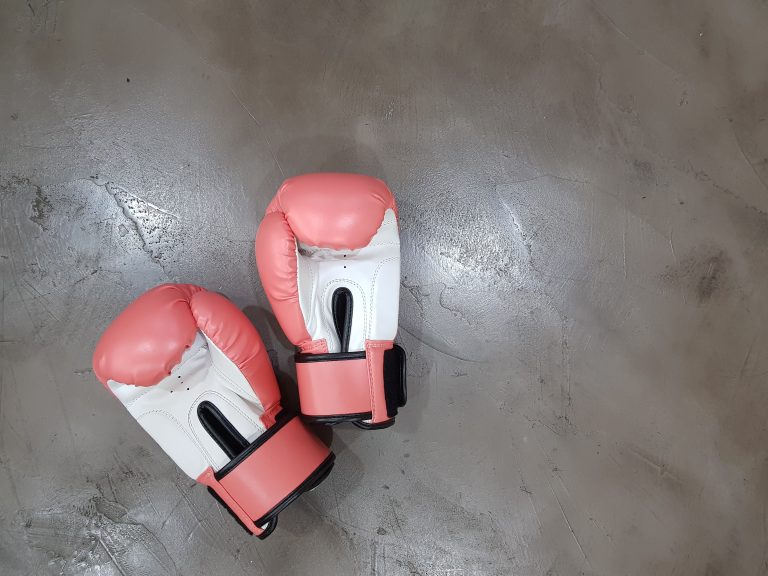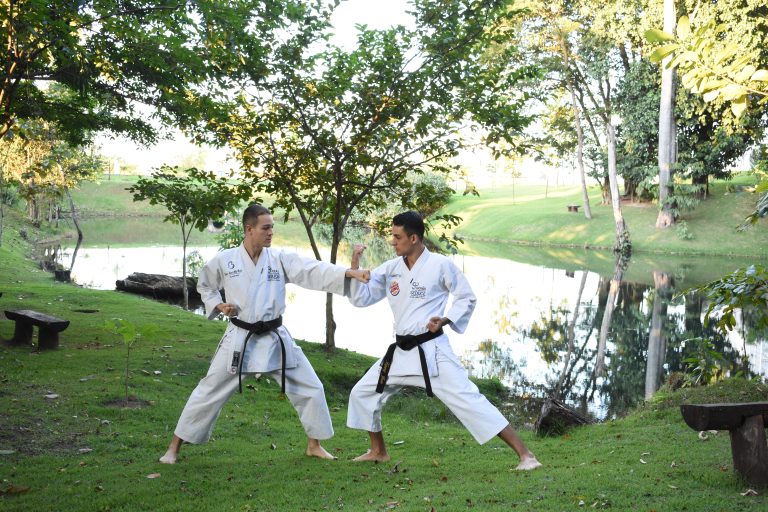How Do You Earn Belts in Karate?
Karate is not just a physical sport, it is also an art and a way of life. Successful karate practice requires discipline, patience, and dedication towards achieving desired physical and mental goals. One of the most significant aspects of karate practice is the system of belts. Earning a new belt is a powerful motivator for students, and each belt signifies that the practitioner has reached a new level of proficiency in their martial arts journey. In this blog, we will explore the different belts in karate, and how to earn them.
The History of Belts in Karate
The modern belt ranking system in karate dates back to the early 20th century when Gichin Funakoshi, the father of modern karate, introduced the concept of using a progression of colored belts to signify the student’s level of expertise. Before this, karate practitioners did not have any belt colors, and their progress was not officially recognized. The belt system introduced by Funakoshi was a significant development in the popularization and standardization of karate, and it continues to be used today to evaluate a student’s progress.
The Different Belts in Karate
Karate uses a colored belt system to indicate the level of expertise or rank of students. The following is a list of belts in the order of how they are typically earned, from beginner to expert:
– White Belt
– Yellow Belt
– Orange Belt
– Green Belt
– Blue Belt
– Purple Belt
– Brown Belt
– Black Belt
In some schools or styles, there may be additional belts or color variations, but these above-listed belts are the most common, and the ranking system may vary slightly from one style or school to another.
Earning Belts in Karate
Earning a new belt in karate requires dedication, discipline, and effort. The requirements may vary depending on the school or style, but generally, the following factors are considered when evaluating a student’s readiness for a belt promotion:
Technical proficiency:
This refers to the student’s ability to execute techniques, katas (a series of formal and stylized combat patterns), and sparring. The student must demonstrate strong technical skills and an understanding of the fundamental principles of karate at the level of the belt they are testing for.
Attendance:
A student must attend regular classes to be eligible for a promotion. Consistent attendance and dedication to training are essential for success in karate.
Attitude and character:
Karate is not just about physical skills; it also emphasizes the development of a strong character. Students must demonstrate a positive attitude, respect for their instructors, and fellow students, discipline, integrity, humility, and self-control.
Time:
The time required to advance between belts will vary depending on the individual’s training, dedication, and skills. Typically, the waiting time between promotion exams increases with each belt level.
Tips to Earn a New Belt
If you are a karate student hoping to earn a new belt soon, these tips may help you achieve your goal faster:
Regular Training:
Consistent practice and training are essential for success. Try to attend all the classes and spend enough time on each technique to master it. Regular training will help you develop your strength, agility, flexibility, and balance.
Focus on Basics:
Karate is rooted in basic techniques, and mastery of these fundamentals is essential to move on to higher levels. Focus on perfecting the basics before moving on to more advanced techniques.
Ask for Feedback:
Instructors are there to guide and teach you. Ask your instructor for feedback and tips on how to improve your techniques. This feedback will help you correct your mistakes and learn new techniques faster.
Set Goals:
Setting specific and measurable goals can help you stay motivated and focused. Set goals for your training, such as mastering a specific technique or passing your next belt exam.
How Do You Earn Belts in Karate?
Introduction
Karate is a popular martial art that originates from Japan. It is an excellent form of exercise and self-defense that has a ranking system based on belts. There are various belts that a karate student can earn as they move up the ranks, each with its own requirements and significance. In this blog post, we will explore some of the most frequently asked questions about how to earn belts in karate.
What are the different color belts in karate?
There are various color belts in karate, and each has a specific meaning. The most common color belts in karate, in order of ascending ranks, are as follows:
- White Belt
- Yellow Belt
- Orange Belt
- Green Belt
- Blue Belt
- Purple Belt
- Brown Belt
- Black Belt
What are the requirements for earning a white belt in karate?
The white belt is the first belt that a student will earn in karate. There are usually no requirements for earning a white belt, as it is given to beginners when they start their training. The white belt signifies the beginning of the journey in learning karate and demonstrates the student’s willingness to learn and progress in the martial art.
What are the requirements for earning colored belts in karate?
The requirements for earning colored belts in karate vary depending on the specific martial arts school and program. Generally, in order to earn the next belt, a student must demonstrate proficiency in the techniques and skills at their current level. Some of the requirements for earning colored belts in karate include:
- Learning various basic techniques and forms
- Sparring with other students
- Demonstrating proficiency in self-defense techniques
- Showcasing excellent spirit, attitude, discipline, and respect towards their instructors and fellow karate students
How long does it take to earn a black belt in karate?
Earning a black belt in karate can take several years of dedicated practice and hard work. The time it takes to earn a black belt largely depends on the individual student’s progress and the requirements of the specific martial arts school or program. While some martial arts schools may require a minimum of four years of practice to earn a black belt, others may require six or more years. It ultimately depends on the student’s dedication, skill level, and the program’s curriculum.
Can you skip belts in karate?
It is uncommon for students to be able to skip belts in karate, as each belt signifies a progression of skills and knowledge. Skipping belts can, in some cases, be detrimental to the student’s development and may affect their future progression in the martial art. However, on rare occasions, some martial arts schools may have specific programs or requirements that allow students to skip a belt level.
How to Earn Belts in Karate: Step-by-Step Guide
Karate is an ancient martial art that has been around for centuries. One of the hallmarks of karate is the colored belt system that signifies a practitioner’s level of expertise. The belt system is a way to track a student’s progress and provide motivation to keep learning and practicing.
If you are interested in learning karate and earning belts, you’ll need to follow these key steps:
Step 1: Find a Qualified Instructor
The first step in earning belts in karate is to find a qualified instructor. A good instructor will be knowledgeable and experienced, with a proven track record of teaching students to improve their skills and advance to higher levels.
Many karate schools offer trial classes or introductory courses to help you get started. This is a great way to get a sense of the instructor’s teaching style and approach, as well as the overall environment of the school.
Step 2: Start with the Basics
Once you’ve found a qualified instructor and enrolled in a karate class, the next step is to start with the basics. At the beginner level, you’ll focus on building a solid foundation of fundamental techniques, such as punches, kicks, and blocks.
It’s important to take your time and master these basic techniques before moving on to more advanced moves. This will ensure that you have a strong foundation from which to build your skills and expertise.
Step 3: Practice Consistently
To earn belts in karate, you need to practice consistently. This means attending class regularly, practicing outside of class, and making karate a part of your daily routine.
Practicing consistently will help you to develop muscle memory, improve your technique, and build stamina and strength. It’s also important to practice with focus and intention, rather than just going through the motions.
Step 4: Demonstrate Your Skills
As you progress in your karate practice, you’ll need to demonstrate your skills to your instructor. This may involve performing specific techniques or kata (patterns of moves) with precision and accuracy.
Your instructor will evaluate your performance and determine whether you’ve mastered the necessary skills to advance to the next level. This typically involves a formal belt test, where you’ll demonstrate your skills in front of a panel of instructors.
Step 5: Advance to the Next Level
If you successfully demonstrate your skills, you’ll advance to the next level and earn a new belt. The belt system typically starts with a white belt (beginner level) and progresses through various colors, such as yellow, orange, green, blue, brown, and black.
Each level requires mastering a specific set of skills and techniques, which build upon the foundation established at the earlier levels. Advancing through the belt system requires dedication, discipline, and hard work, but the rewards are well worth it.
Conclusion
Earning belts in karate is a rewarding and challenging journey that requires dedication, discipline, and hard work. By following these steps, you can build a solid foundation of skills, progress through the belt system, and achieve your goals in karate. Remember to practice consistently, find a qualified instructor, and focus on mastering the basics before moving on to more advanced techniques.
Inhaltsverzeichnis






